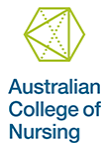Applied Dermatological Anatomy and Physiology

This unit of study is designed for registered nurses whom are working or wish to work in a variety of dermatology and cosmetic nursing environments. Client consultation and assessment and clinical manifestations of clients requiring treatment are examined. Adult learning principles are used to address topics such as advanced applied knowledge of dermatological anatomy and physiology, holistic assessment, chronic disease processes and patient education.
Term : APRIL, OCTOBER
Hours of Study: 150
Credit Points : 6
This unit has no pre-requisites and is suitable for ENs
Theme 1: The advanced role of the nurse
Evaluate the potential implications of global environmental issues and the Australian climate to dermatological conditions experienced by people in your care.
Theme 2: Anatomy and physiology of the integumentary system
Apply an advanced knowledge of anatomy and physiology of the assessment and of people undergoing dermatological and cosmetic treatment.
Theme 3: Conditions of the skin and the associated effects
Discuss the principles of holistic person assessment in regards to providing evidence based nursing care.
Theme 4: Holistic assessment
Reflect upon the legal and ethical issues that affect dermatology and cosmetic nursing practice.
Theme 5: Chronic disease management, aesthetics and health promotion
Critically analyse the collaborative approach to chronic disease management, aesthetics and health promotion principles in the care of people with dermatological conditions.
- Anaesthesia Fundamentals | Anatomy | Hazards of Po...
- Posted By eIntegrity Healthcare e-Learning
- Posted Date: 2024-11-25
- Location:Online
- The patient positioned for surgery is vulnerable to extraneous harm. Knowledge of the common injuries and understanding of the causes of harm enables the anaesthetist to minimize the risks.
- Anaesthesia Fundamentals | Anatomy | Bones And Joi...
- Posted By eIntegrity Healthcare e-Learning
- Posted Date: 2024-11-25
- Location:Online
- This session describes the anatomy of the upper and lower limbs, concentrating on the bones and joints. Particular attention is paid to those bones and joints that are of importance to the anaesthetist.
- Anaesthesia Fundamentals | Anatomy | Facial Skelet...
- Posted By eIntegrity Healthcare e-Learning
- Posted Date: 2024-11-25
- Location:Online
- This session describes the bones of the facial skeleton and skull vault. The important muscles that move the mandible are described. The classification and positions of fracture lines commonly seen following trauma to the face and surgical osteotomy are a
- Anaesthesia Fundamentals | Anatomy | Spine Part 2:...
- Posted By eIntegrity Healthcare e-Learning
- Posted Date: 2024-11-25
- Location:Online
- This session covers the anatomy of the sacrum, coccyx and sacral hiatus. It describes the intervertebral discs and spinal ligaments, and the vertebral levels of some of the surface markings of the body. The different types of spina bifida are reviewed.
- Anaesthesia Fundamentals | Anatomy | Spine: Cervic...
- Posted By eIntegrity Healthcare e-Learning
- Posted Date: 2024-11-25
- Location:Online
- The session covers the anatomy of the bones of the vertebral column in the cervical, thoracic and lumbar regions.


